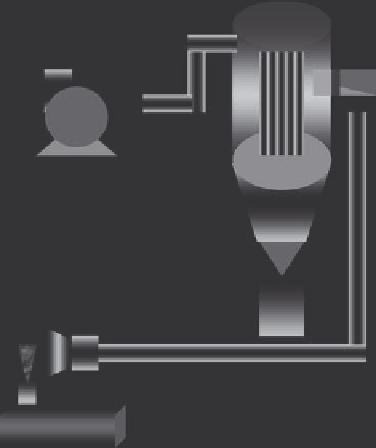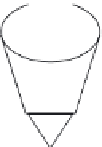Environmental Engineering Reference
In-Depth Information
Fan
Bags
Collected
dust hopper
Intake hood
Collected dust
container
Captured air and
dust
Air pollutant
emission source
FIGURE 11.31
Generalized schematic of a dust collector.
• Contaminant type: The type of contaminants influences migration pathways,
mobility, risk, and cleanup targets.
• Nature and extent: Nature and extent of contamination impacts receptor analysis
and potential routes of exposure and cleanup targets.
• Contaminant mass and concentration: The mass and concentration of contami-
nants and the potential presence of free phase influences remedial technology
selection.
• Medias to be remediated (e.g., soil, groundwater, surface water, or sediment): Some
media are more difficult and costly to remediate than others.
• Land use: Residential land typically requires the most stringent cleanup targets.
• Cleanup targets: Contaminant type, location, and potential receptors and expo-
sure pathways exert the most influence over establishing cleanup targets.
• Technology selected: Some technologies may be more costly than others (i.e.,
pumping and treating groundwater vs. natural attenuation).
• Time: Time may influence cost, especially if the release involves actual human
exposure or migration to a sensitive ecological receptor that requires immediate
remedial action.
• Legal action: Litigation can delay cleanup efforts and lead to more costly remedia-
tion due to delays and potential disputes over technology types.
To evaluate whether certain contaminants cost more to remediate than others and the
effects of geology on remediation, 280 remedial actions conducted at sites of environmen-
tal contamination were investigated (Rogers et al. 2006, 2009). A few characteristics of each
site included



































Search WWH ::

Custom Search